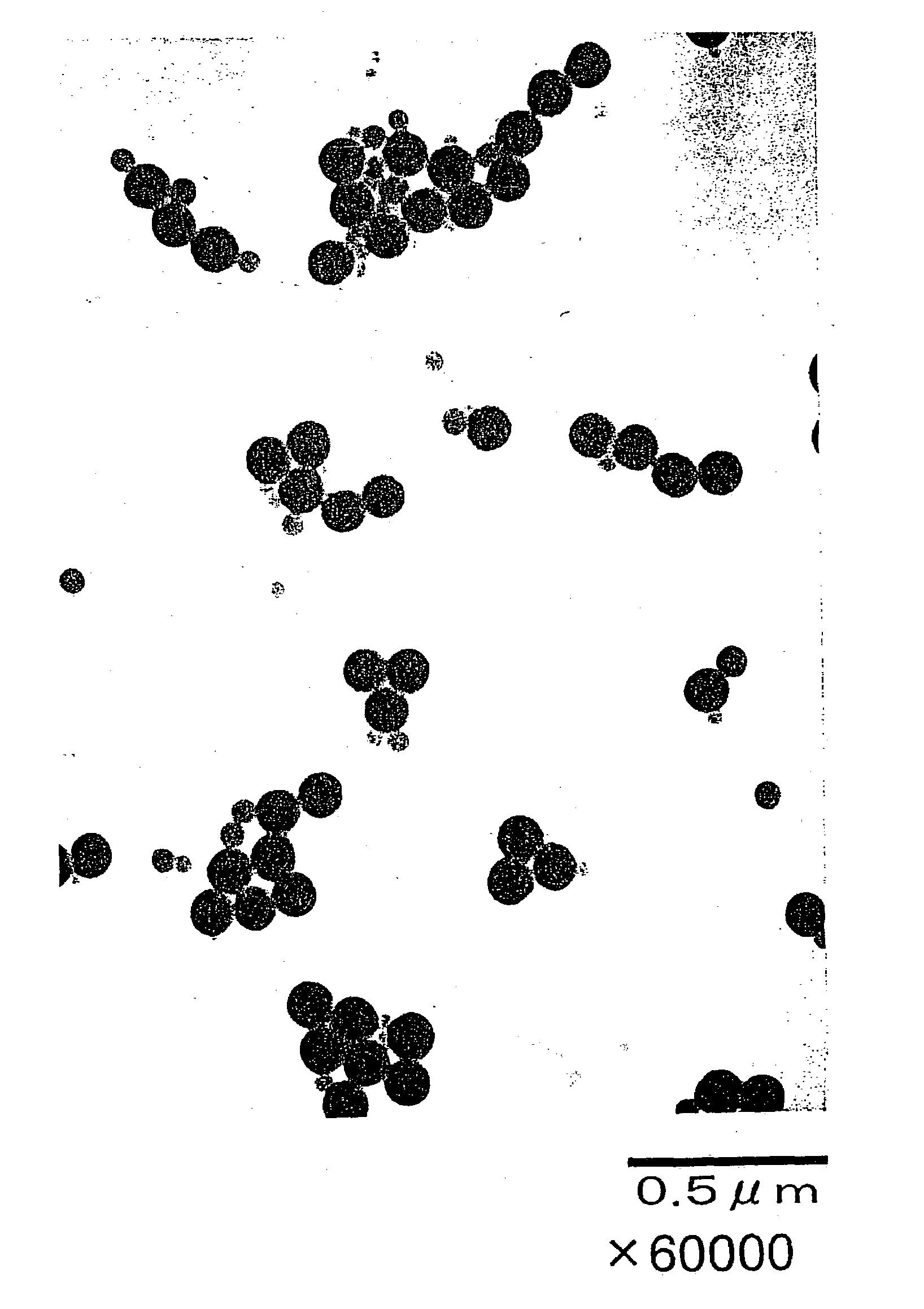Emulsion for thermal recording material and thermal recording materials made by using the same
- Summary
- Abstract
- Description
- Claims
- Application Information
AI Technical Summary
Benefits of technology
Problems solved by technology
Method used
Image
Examples
production example c6
[0053]An aqueous resin emulsion (C6) was produced in the same manner as in Production Example C1 except that, in the operation after production of a copolymer resin (A1) in Production Example C1, the amount of deionized water for solid content adjustment was changed to 400 parts, the amount of ammonium persulfate was changed to 2.5 parts and the vinyl monomers emulsion was changed as follows.
[0054]
Vinyl monomers emulsionAcrylonitrile250.0 partsButyl acrylate250.0 partsSodium dodecylbenzenesulfonate 1.0 part Deionized water200.0 parts
production example c7
[0055]An aqueous resin emulsion (C7) was produced in the same manner as in Production Example C1 except that, in Production Example C6, no deionized water for solid content adjustment was used, the amount of ammonium persulfate was changed to 1.5 parts and the vinyl monomers emulsion was changed as follows.
[0056]
Vinyl monomers emulsionAcrylonitrile25.0 partsButyl acrylate25.0 partsSodium dodecylbenzenesulfonate0.25 part Deionized water20.0 parts
production example c8
[0057]An aqueous resin emulsion (C8) was produced in the same manner as in Production Example C1 except that, in Production Example C7, the amount of ammonium persulfate was changed to 1.0 parts and the vinyl monomers emulsion was changed as follows.
[0058]
Vinyl monomers emulsionAcrylonitrile 50 partsButyl acrylate 50 partsSodium dodecylbenzenesulfonate0.1 part Deionized water40 parts
PUM
| Property | Measurement | Unit |
|---|---|---|
| Temperature | aaaaa | aaaaa |
| Temperature | aaaaa | aaaaa |
| Percent by mass | aaaaa | aaaaa |
Abstract
Description
Claims
Application Information
 Login to View More
Login to View More - R&D
- Intellectual Property
- Life Sciences
- Materials
- Tech Scout
- Unparalleled Data Quality
- Higher Quality Content
- 60% Fewer Hallucinations
Browse by: Latest US Patents, China's latest patents, Technical Efficacy Thesaurus, Application Domain, Technology Topic, Popular Technical Reports.
© 2025 PatSnap. All rights reserved.Legal|Privacy policy|Modern Slavery Act Transparency Statement|Sitemap|About US| Contact US: help@patsnap.com


